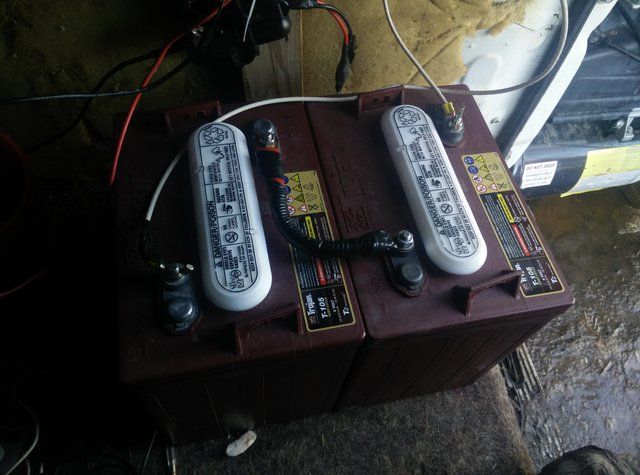minimotos95
Well-known member
Alright so I need real batteries but am left with the the choice,
Trojan T105s,roughly $270 for a pair just across town
Sam's club GC2 batteries, roughly $180 but would cost an extra $20 in gas round trip and potentially some fast food.
The Trojans are obviously the better battery and have an authorized dealer here in town where I am stationary for the foreseeable future. But are they really worth the extra cash? The sam's club is let's say $70 cheaper, essentially the same in regards to capacity and size, but is more likely to need warrantied, which would mean driving round trip again?
For the sake of this decision, weight, size, capacity are not factors. Just the dollars and the expected lifespan.
I am currently running 100w of solar but will likely upgrade to 200w in the future. My energy consumption will be based on what I can replenish so it is likely rare I will take the batteries below 80% until my solar gets upgraded. I can't go any bigger than a 200w system on my van so a pair of golf cart batteries should be more than sufficient for a long while. Right now I am scraping by with a small starting battery.
Some rough calculations I did showed the T105 would have to last 7 years to be the same value as the sam's batteries if they last 5 years.
Trojan T105s,roughly $270 for a pair just across town
Sam's club GC2 batteries, roughly $180 but would cost an extra $20 in gas round trip and potentially some fast food.
The Trojans are obviously the better battery and have an authorized dealer here in town where I am stationary for the foreseeable future. But are they really worth the extra cash? The sam's club is let's say $70 cheaper, essentially the same in regards to capacity and size, but is more likely to need warrantied, which would mean driving round trip again?
For the sake of this decision, weight, size, capacity are not factors. Just the dollars and the expected lifespan.
I am currently running 100w of solar but will likely upgrade to 200w in the future. My energy consumption will be based on what I can replenish so it is likely rare I will take the batteries below 80% until my solar gets upgraded. I can't go any bigger than a 200w system on my van so a pair of golf cart batteries should be more than sufficient for a long while. Right now I am scraping by with a small starting battery.
Some rough calculations I did showed the T105 would have to last 7 years to be the same value as the sam's batteries if they last 5 years.




